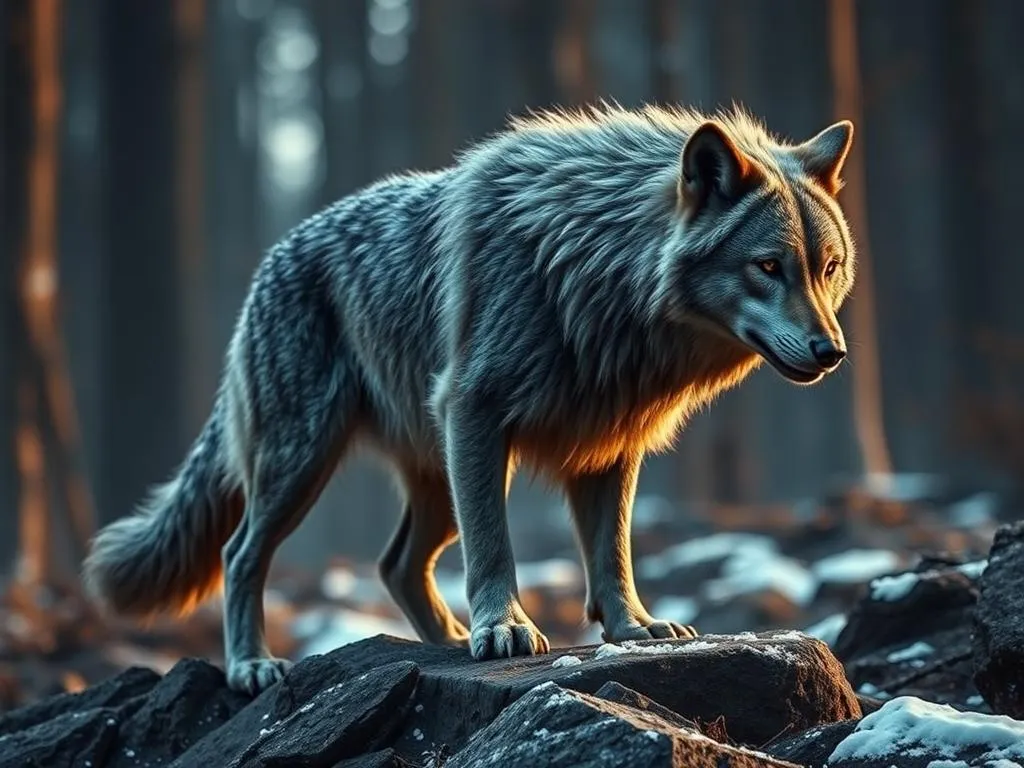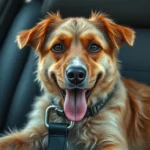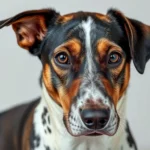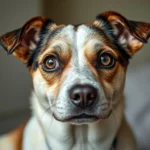
Introduction
Direwolves are one of the most iconic creatures from the Game of Thrones universe, captivating audiences with their fierce loyalty, majestic presence, and deep connection to the Stark family. In the series, these mythical animals symbolize not only the strength of House Stark but also the intricacies of loyalty, survival, and family bonds. As fans of Game of Thrones find themselves enchanted by these majestic beasts, many ponder their real-world counterparts, sparking interest in owning wolf-like pets and understanding the historical significance of direwolves.
Understanding Direwolves
What Are Direwolves?
Direwolves, often depicted as larger and more fearsome than their modern relatives, are rooted in both mythology and folklore. Defined as a prehistoric species, direwolves belonged to the genus Canis dirus, and they roamed North America during the late Pleistocene epoch. Characterized by their larger size, robust build, and powerful jaws, these ancient creatures were well-adapted for hunting large prey, much like the wolves we know today.
Historically, direwolves have been mythologized in various cultures, symbolizing strength and ferocity. However, it’s essential to differentiate between the legendary direwolf and its modern-day counterpart, the wolf. While both share a common ancestry, direwolves were significantly larger and adapted to a different ecological niche, which ultimately played a role in their extinction.
Direwolves in Game of Thrones
In Game of Thrones, direwolves serve as both companions and protectors to the Stark children, reflecting their personalities and journeys throughout the series. Each direwolf has a unique name and personality, closely tied to their respective Stark sibling.
- Ghost, the silent and ferocious companion of Jon Snow, embodies loyalty and the struggle of being an outsider.
- Nymeria, Arya Stark’s fierce protector, illustrates the themes of freedom and independence.
- Other notable direwolves include Summer and Shaggydog, each representing the distinct traits of their Stark counterparts.
The direwolves symbolize the strength and resilience of House Stark, acting as reminders of their Northern heritage. Their presence in the storyline reinforces the themes of loyalty, family, and the harsh realities of survival in a world filled with danger.
The Real-Life Inspiration Behind Direwolves
The Extinct Direwolf Species
The prehistoric direwolf (Canis dirus) lived approximately 250,000 to 10,000 years ago and was one of the largest canine species of its time. With an average weight of around 100 pounds, they were formidable hunters, preying on large herbivores such as bison and horses. The direwolf’s robust jaw structure allowed it to exert more force while biting, making it an exceptional predator.
Despite their prowess, direwolves faced significant challenges that contributed to their extinction at the end of the last Ice Age. Climate changes, habitat loss, and competition with other predators played crucial roles in their decline. The disappearance of large prey species further complicated their survival, leading to their eventual extinction and leaving behind a fascinating legacy.
The Role of Wolves in Ecosystems
Wolves, as apex predators, play a pivotal role in maintaining ecological balance. Their hunting habits regulate populations of herbivores, which in turn prevents overgrazing and promotes a healthy ecosystem. The dynamics of wolf packs also illustrate complex social structures that emphasize cooperation and hierarchy, showcasing the importance of social bonds in nature.
Comparatively, the game of thrones direwolves depicted in the series share some behavioral similarities with modern wolf species. However, the mythical nature of direwolves allows for a more significant emphasis on loyalty and companionship, traits that resonate deeply with fans of the series.
Direwolves as Pets
Can You Own a Direwolf?
The desire to own a creature that resembles the game of thrones direwolves raises a crucial question: Can you own a direwolf? While direwolves themselves are extinct and can’t be owned, many people are drawn to wolf hybrids or breeds that mimic their appearance.
However, owning wolf hybrids comes with a host of legal and ethical considerations. In many regions, owning a wolf or a wolf hybrid may be illegal or require special permits. Additionally, ethical concerns arise regarding the welfare of these animals, as they often have needs that differ significantly from domestic dogs.
Caring for a Wolf-Like Dog
For those who admire the game of thrones direwolves and wish to have a similar companion, several dog breeds closely resemble them. These include:
- Alaskan Malamute: Known for their strength and endurance, Malamutes are friendly, affectionate, and incredibly loyal.
- Siberian Husky: With striking blue or multicolored eyes and thick fur, Huskies are known for their playful nature and intelligence.
- Tamaskan Dog: A breed specifically developed to resemble wolves, Tamaskans have a wolf-like appearance combined with a friendly demeanor.
Caring for wolf-like dogs requires an understanding of their unique needs. Training and socialization are essential to ensure they are well-adjusted companions. Consistent exercise, mental stimulation, and social interaction are vital for their well-being. Prospective owners should also be aware of common health issues associated with these breeds, including hip dysplasia and genetic predispositions.
The Myth vs. Reality of Direwolves
Direwolves in Popular Culture
The portrayal of direwolves in Game of Thrones has significantly influenced popular culture, igniting imaginations and inspiring numerous adaptations in literature and film. These creatures hold a unique place in fantasy, often depicted as loyal companions or fierce protectors.
When compared to other creatures like dragons, direwolves represent a more grounded, relatable aspect of fantasy. They embody themes of loyalty and family, resonating with audiences on an emotional level and inviting discussions about the bond between humans and animals.
Misconceptions About Wolves and Their Behavior
Despite their popularity, numerous misconceptions surround wolf behavior, largely fueled by myths and sensationalized portrayals in media. Many people believe wolves are inherently aggressive or dangerous, but this is far from the truth.
Wolves are social animals that thrive in packs, showcasing complex social dynamics. They communicate through vocalizations, body language, and scent marking, all of which are essential for maintaining pack cohesion. Understanding these behaviors is crucial for dispelling myths and fostering a greater appreciation for these incredible animals.
FAQs About Direwolves
Common Questions People Ask
-
Do direwolves really exist?
While direwolves are an extinct species that roamed the earth thousands of years ago, their mythical counterparts in popular culture, such as the game of thrones direwolves, have captured the imagination of many. -
How do direwolves behave in the wild?
As a prehistoric species, direwolves likely exhibited hunting behaviors similar to modern wolves, working in packs to hunt large prey and maintain the balance of their ecosystem. -
What is the difference between a wolf and a direwolf?
The primary difference lies in size and adaptations. Direwolves were larger and specialized in hunting larger prey, while modern wolves are more varied in size and behavior, adapting to different environments and prey.
Expert Insights
Veterinarians often emphasize the importance of responsible pet ownership when considering wolf-like dogs. According to experts, potential owners should thoroughly research the breed, understand its needs, and ensure they can provide a suitable environment.
Veterinarians also recommend socializing such pets from an early age and providing consistent training to foster a positive relationship between the dog and its owner. This proactive approach helps reduce behavioral issues and ensures a harmonious living situation.
Conclusion
The game of thrones direwolves are not only a captivating element of a beloved series, but they also draw inspiration from real-life historical and ecological contexts. As we explore the fascinating world of these mythical creatures, we uncover significant lessons about loyalty, family dynamics, and the intricate relationships between humans and animals.
Understanding the realities of wolf behavior, the importance of responsible pet ownership, and the ecological role of wolves enriches our appreciation of these magnificent creatures. The allure of direwolves continues to inspire discussions, encouraging fans to delve deeper into the themes of loyalty, companionship, and the natural world.









